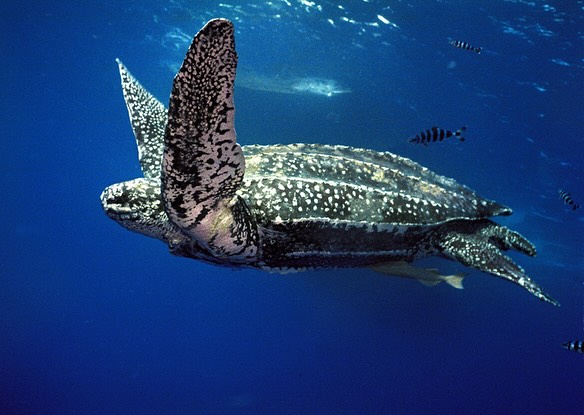- Celebrate Happy World Aquatic Animal Day by highlighting the Sea Turtle Telemetry Partnership Project in Guyana.
- Explore the satellite tagging and tracking of leatherback, hawksbill, olive ridley, and green sea turtles to study migration patterns.
- Understand the ecological importance and conservation needs of sea turtles within the Shell Beach Protected Area.
- Discover the collaborative efforts of diverse teams from various backgrounds in tracking turtle foraging migrations.
- Gain insights into the collected data’s impact on the understanding and protection of sea turtles’ habitats.
Celebrating Happy World Aquatic Animal Day provides a unique opportunity to recognize and appreciate the diverse and vital life forms in our planet’s waters. Among these, marine turtles play a crucial role in maintaining the health of our coral reefs and ocean ecosystems. This special day encourages global awareness and action towards conserving aquatic animals, with a unique spotlight on initiatives like the Sea Turtle Telemetry Partnership Project in Guyana.
This year, in May 2023, a dynamic team from multiple backgrounds and organizations embarked on an important mission at the Shell Beach Protected Area in Guyana. The goal was to satellite-tag four species of marine turtles: the leatherback (Dermochelys coriacea), hawksbill (Eretmochelys imbricata), olive ridley (Lepidochelys olivacea), and green sea turtles (Chelonia mydas). Through this initiative, the team aimed to gather invaluable data on the migration patterns and behaviors of these species, contributing significantly to the global efforts on marine conservation.
Satellite tagging has emerged as an essential tool in the study of marine life. By attaching a small GPS device to the turtles, researchers can track their movement across vast ocean distances. Satellite telemetry helps in understanding the complex migratory routes and foraging areas of these ancient mariners. By successfully tagging seven turtles, the project enabled a detailed analysis of their foraging migrations and provided insights into the uncharted aspects of their spatial ecology.
The Shell Beach Protected Area serves as a significant nesting site for these endangered species. Sea turtles are often migratory, traversing thousands of miles between foraging grounds and nesting beaches. Through understanding these routes, conservationists can identify critical habitats that require protection and ensure these majestic creatures continue to thrive.
Leatherback turtles are the largest marine turtles, with powerful swimming capabilities that allow them to traverse entire ocean basins. Hawksbills are known for their beautiful shell and play a pivotal role in coral reef ecosystems by keeping sponge populations in check, which maintains a healthy balance. Olive ridleys, the smallest of the three, engage in mass nesting events called arribadas. Green turtles mostly inhabit tropical and subtropical seas and primarily feed on seagrass and algae, which helps maintain healthy seagrass beds essential for marine biodiversity.
The conservation of these turtles is not only crucial for maintaining marine biodiversity but also for supporting coastal communities that rely on marine resources. Threats such as bycatch, habitat loss, and climate change continue to exert pressure on turtle populations. This project highlights the importance of collaborative efforts from governmental and non-governmental organizations, scientific institutions, and local communities in implementing effective conservation strategies.
Data gathered from this initiative offers a wealth of information on the habitat usage by these species in their migratory routes, both in Guyana and beyond. It contributes to a broader understanding of the marine ecosystems essential for their survival and well-being. Such insights are invaluable in guiding conservation policies and fostering habitat protection.
Happy World Aquatic Animal Day is more than just a celebration; it is a call to action for the global community to recognize and take responsibility for the preservation of aquatic life forms. Engaging in activities that spotlight the significance of projects like the Sea Turtle Telemetry Partnership not only raise awareness but also drive tangible actions toward a sustainable future for all marine life.
With continuous education and outreach efforts, the information from the satellite-tagged sea turtles serves as a beacon for future projects. It fosters a deeper understanding of conservation challenges and inspires new generations of researchers and conservationists. If you’re eager to explore further, consider obtaining a copy of The Tortoise Issue 13, featuring comprehensive updates on this remarkable program.
*****
Source Description
Happy World Aquatic Animal Day🐟
To celebrate these fascinating creatures, we’re spotlighting our Sea Turtle Telemetry Partnership Project located in Guyana.
In May of 2023, a diverse team from various backgrounds, agencies, and organizations spent two weeks at Shell Beach Protected Area, satellite-tagging four species of marine turtles (Leatherback Sea Turtle ~Dermochelys coriacea, Hawksbill Sea Turtle~ Eretmochelys imbricata, Olive Ridley Sea Turtle~ Lepidochelys olivacea and Green Sea Turtle ~Chelonia mydas) to study their migration patterns and behaviors. They were successful in tracking seven turtles on their foraging migrations! The data collected from this project provides us with valuable insights into the habitat use of these protected sea turtle species, in both Guyana and beyond.
To learn more about our program updates, purchase your copy of The Tortoise Issue 13 today!


